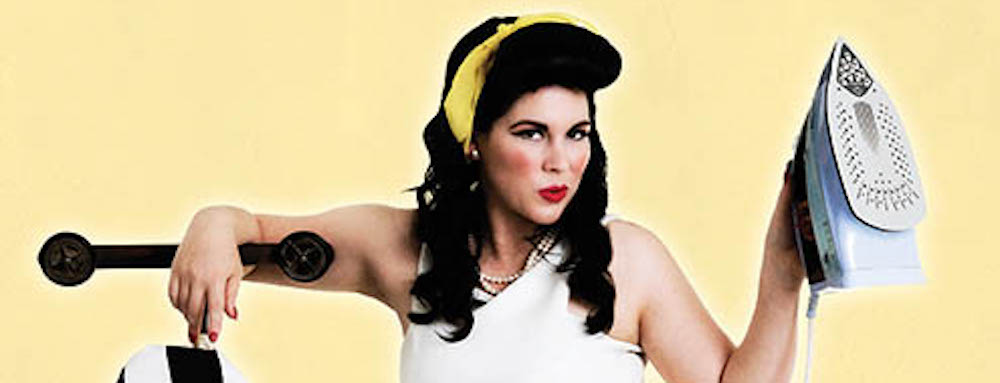
Well … how one little ad on the side of an Action bus can set the cat among the pigeons!
Recently we’ve been running advertisements for our ironing services, among others. They’re big, they’re bright and they feature a model dressed in a style that can be described as ‘a homage to the 1950s’.
Unfortunately, some people have taken umbrage at these ads, suggesting that we have ‘sexualised women’, not only with our ad’s taglines, but with the way the images are styled and presented, and with the fact that they feature a woman undertaking laundry tasks.
Let’s just say from the outset that it was not our intention to upset anyone with these ads. They were designed to be a parody – a clear contradiction highlighting the absurdity of an outdated mode of thinking about women’s so-called ‘role’ not only in laundering, but in household duties generally.
It was aimed to expose people to things we commonly don’t see in society, through an oversimplified nod to a bygone-era … the emphasis being on bygone.
Interestingly, laundry did take a massive leap forward in the 1950s, with the advent of electronic washers and dryers significantly reducing boiling and washing clothes and linen by hand. But what we’re saying is that in 2015, laundry has taken another big leap forward (as has the division of household labour). There are now so many more options available to people … Ainslie Laundrette being one.
This leap forward in laundry technology and in type and availability of fabric means that being a professional launderer today requires us to be part-microbiologist and part-chemist. For example, we know that we must treat different fabrics very differently. Take polyester and cotton for instance. Polyester fibres are smooth and round and its base ingredients are derived from oil. This means it initially repels water and hangs on to oily stains which can then begin to smell. Cotton on the other hand twists and folds over itself and is also very ‘wettable’ making it easy to wash and rinse.
We also need to understand how long each fabric type needs to be washed to remove stains, at what temperature and with what type of agitation.
This applied thinking is done by some very qualified staff. At Ainslie Laundrette, 90% of our staff members have a Year 12 certificate equivalent and 30% are tertiary educated. Our team enjoys flexible employment that accounts for those in carer support roles and for those with a disability.
We support a women’s refuge and a girls’ soccer team. A woman (Jennifer) has been successfully running a business for the past four years that employs a number of Canberrans.
All in all we’re as far from the ‘1950s housewife’ stereotype as a laundrette can be. About the only thing we share with the 1950s ideal is the cleanliness of our product.
And there’s nothing demeaning in that.
